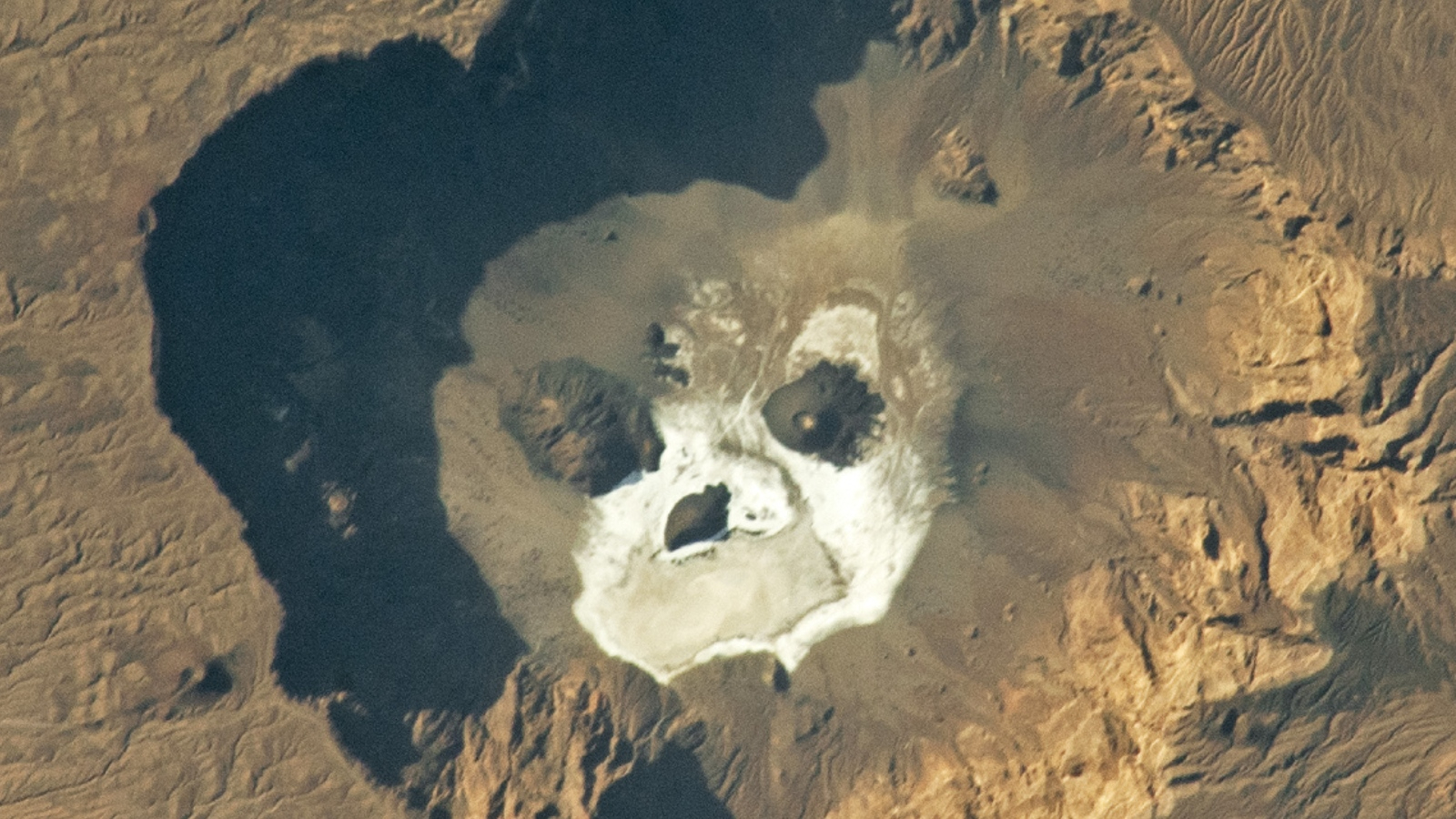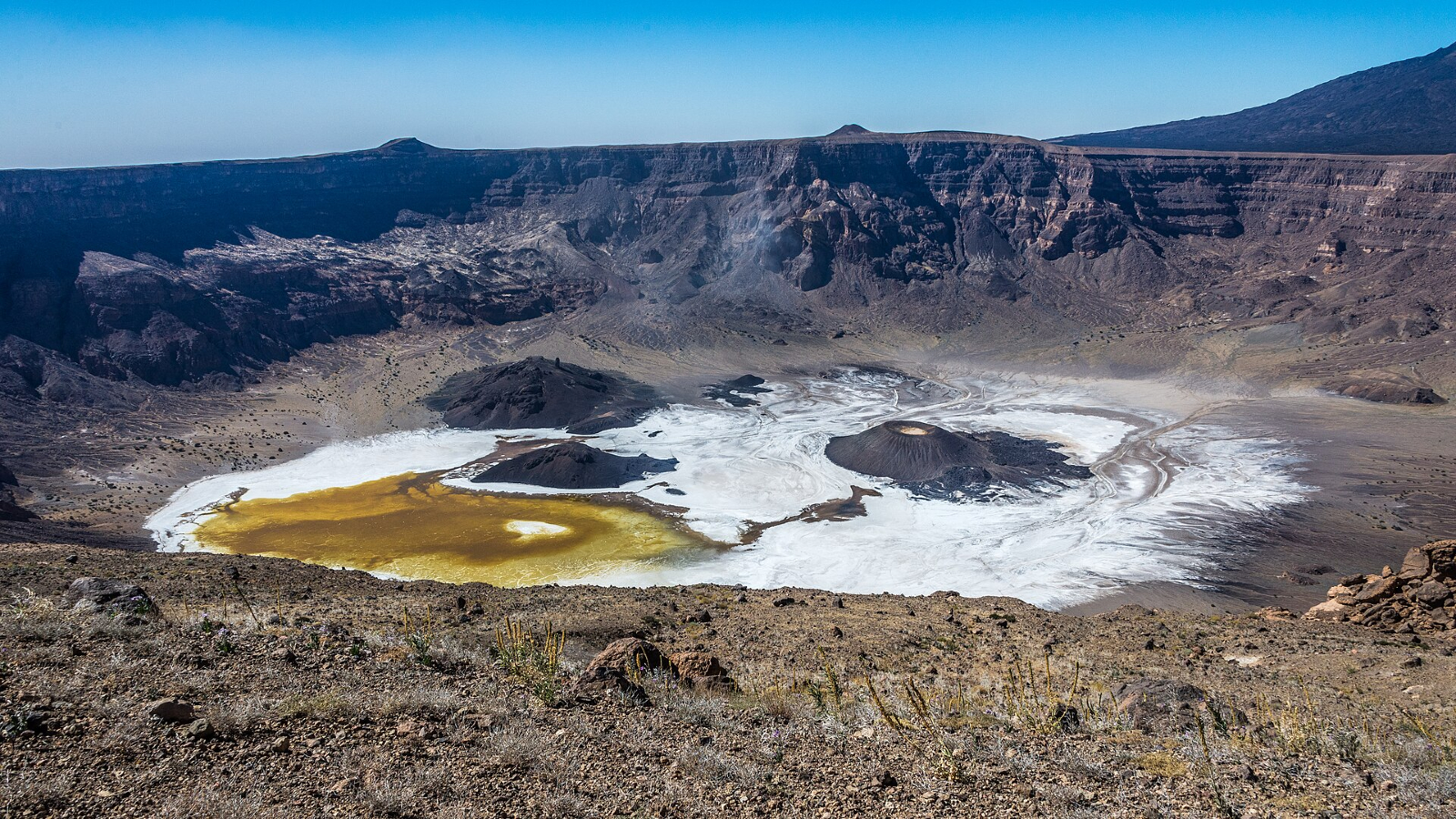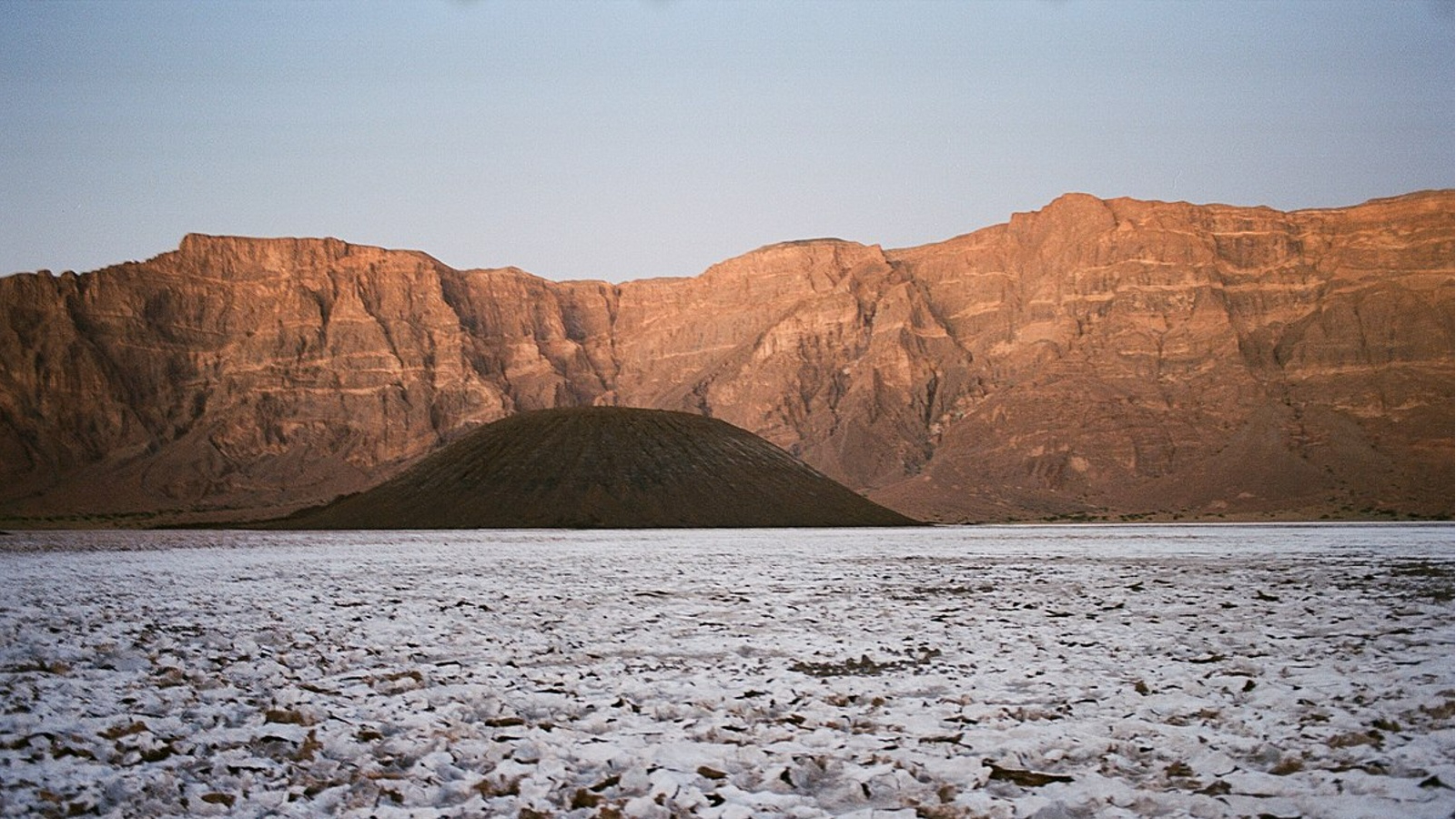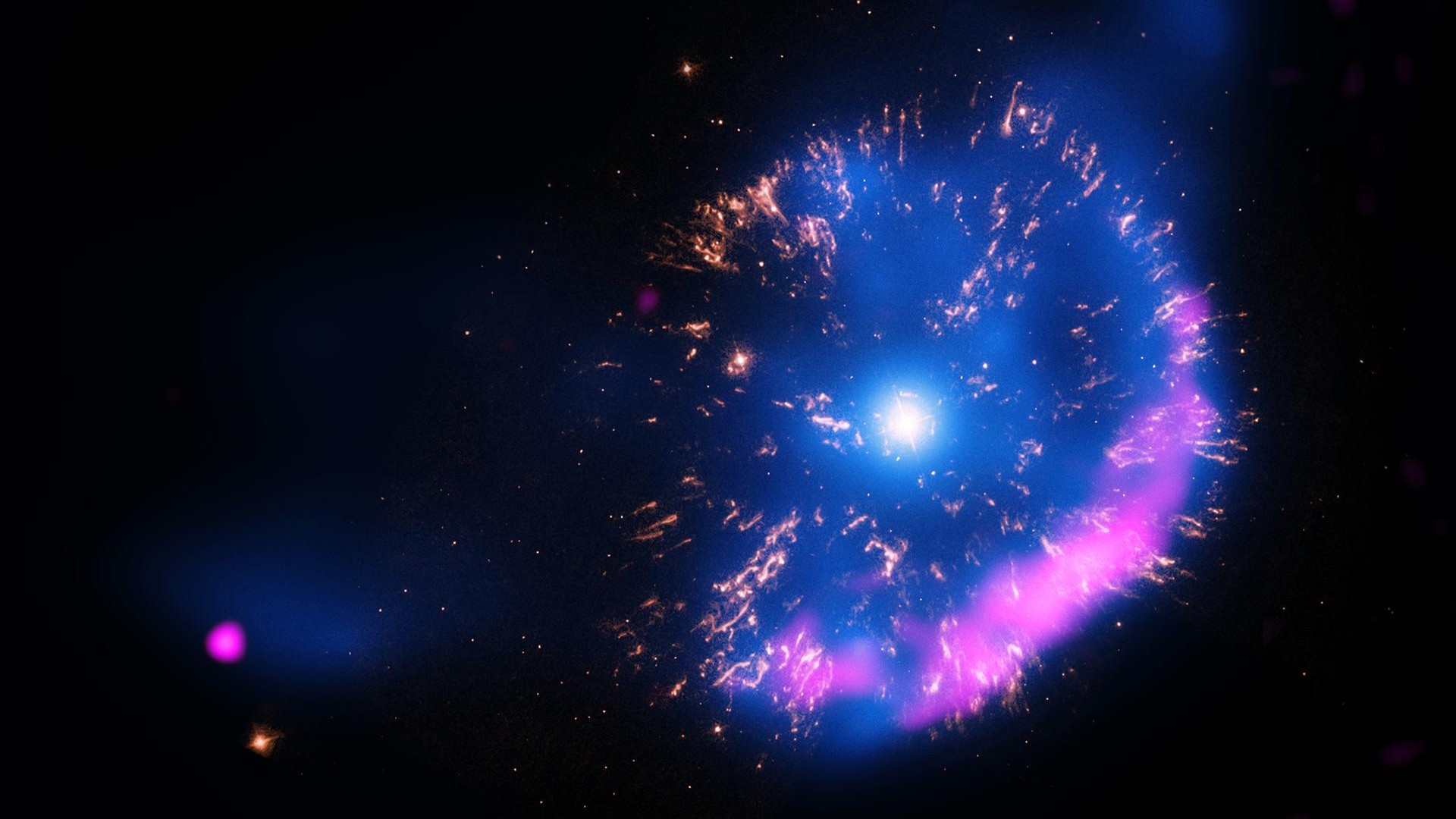Glowering 'skull' stares upward from a giant volcanic pit in the Sahara — Earth from space
A 2023 astronaut photo shows off an unusual cranium-like structure appearing to stare up into space from the floor of a large volcanic caldera in Chad.

Where is it? Trou au Natron, Tibesti Massif, Chad [20.96825691, 16.571382232]
What's in the photo? A skull-like structure within a volcanic caldera appears to stare up into space
Who took the photo? An unnamed astronaut on board the International Space Station (ISS)
When was it taken? Feb. 12, 2023
This eerie astronaut photo shows a ghostly structure with a skull-like appearance glowering up into space from the floor of a giant volcanic pit in the Sahara.
The cranium lookalike is located on the floor of Trou au Natron, also known as Doon Orei — a 3,300-foot-wide (1,000 meters) volcanic caldera, or crater, in northern Chad. (Trou au Natron translates to "natron hole" in French, while Doon Orei means "big hole" in Teda.)
The volcanic pit was carved out by a massive eruption hundreds of thousands of years ago and sits at the heart of the Tibesti Massif, a 300-mile-long (480 kilometers) mountain range that stretches across the center of the Sahara desert through Chad and Libya, according to NASA's Earth Observatory.
When viewed from space, the caldera's floor has an unmistakable skull-like appearance. But when viewed from ground level (see below), it looks almost unrecognizable.
Related: See all the best images of Earth from space

The white color of the skull's mouth, nose and cheeks is the result of natron, a naturally occurring mixture of sodium carbonate decahydrate, sodium bicarbonate, sodium chloride and sodium sulfate. This salty mix is extremely flaky and looks like cracked paint when viewed up close.
The eyes and nose hole areas are actually cinder cones — steep conical hills built around volcanic vents that tower above the rest of the caldera floor. The darker area to the left of the face is the shadow cast by the tall rim of the crater, which helps give the skull its distinctive shape.
Get the world’s most fascinating discoveries delivered straight to your inbox.

Trou au Natron is barren and lifeless today, but experts believe it was once a thriving glacial lake. In the 1960s, researchers discovered fossils of sea snails and plankton beneath the pit's natron-covered floor, which date back to 14,000 years ago. In 2015, a follow-up expedition found algal fossils that date back as far as 120,000 years ago.
The caldera has been volcanically dormant since shortly after it formed. However, it is situated close to Tarso Toussidé, a broad volcanic feature covered with a sea of frozen lava (located just beyond the top of the satellite image). Tarso Toussidé is home to a stratovolcano that is still believed to be volcanically active despite not erupting for more than 12,000 years, according to the Smithsonian Institution's Global Volcanism Program.
Trou au Natron is not the only volcanic structure that looks like a skull when viewed from space: The Chiltepe Peninsula in Nicaragua's Lake Managua has a pair of volcanic lakes, each sitting within its own caldera, which give the landmass a very similar appearance to the caldera in Chad.

Harry is a U.K.-based senior staff writer at Live Science. He studied marine biology at the University of Exeter before training to become a journalist. He covers a wide range of topics including space exploration, planetary science, space weather, climate change, animal behavior and paleontology. His recent work on the solar maximum won "best space submission" at the 2024 Aerospace Media Awards and was shortlisted in the "top scoop" category at the NCTJ Awards for Excellence in 2023. He also writes Live Science's weekly Earth from space series.
You must confirm your public display name before commenting
Please logout and then login again, you will then be prompted to enter your display name.


